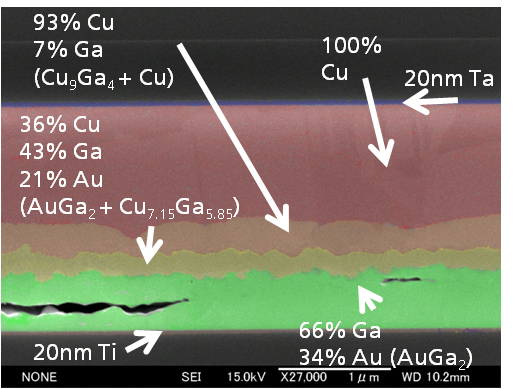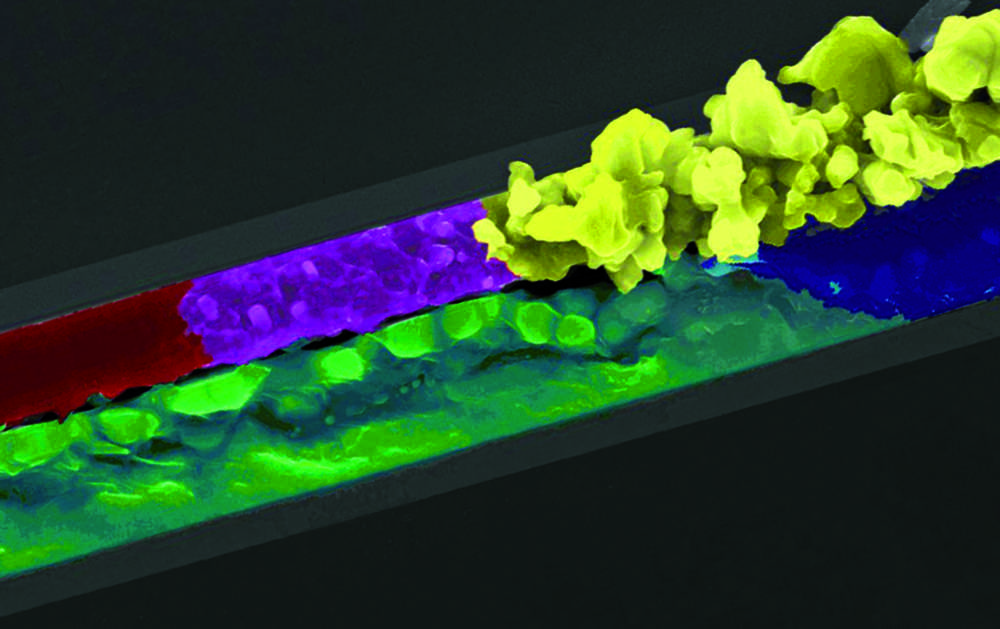The wafer-level packaging and thereby especially bond processes with metallic interlayers play a major role concerning the 3D-Integration. As a result, the metallic bond itself not only forms a firmly bond between the functional elements of the 3D package, but can also form an electric contact and improve the heat dissipation. The solid-liquid interdiffusion (SLID) bonding is a bond process based on the formation of intermetallic phases in a bimetal system. Additionally, the bimetal system consists of one metal with a low and one metal with a high melting point. Common metals with a low melting point are tin (Sn) and indium (In), while copper (Cu), gold (Au) and silver (Ag) are mainly used as the high melting point partner. Besides Au-Sn and Ag-Sn, scientific research concerning SLID bonding has laid its focus upon Cu-Sn because of cost efficiency and migration of Cu-Sn. For the Cu-Sn SLID bonding, copper metallized wafer are bonded with a tin interlayer. The bonding surfaces undergo a direct and full area contact caused by the bond pressure. Following an intermetallic η-phase (Cu6Sn5) is formed through diffusion at the boundary layers between the Cu and Sn layers.
A cleanroom preparation line, including characterization equipment for the processing of 4” up to 8” substrates is available at Fraunhofer ENAS for the wafer-level SLID-bonding.
 Fraunhofer Institute for Electronic Nano Systems
Fraunhofer Institute for Electronic Nano Systems



